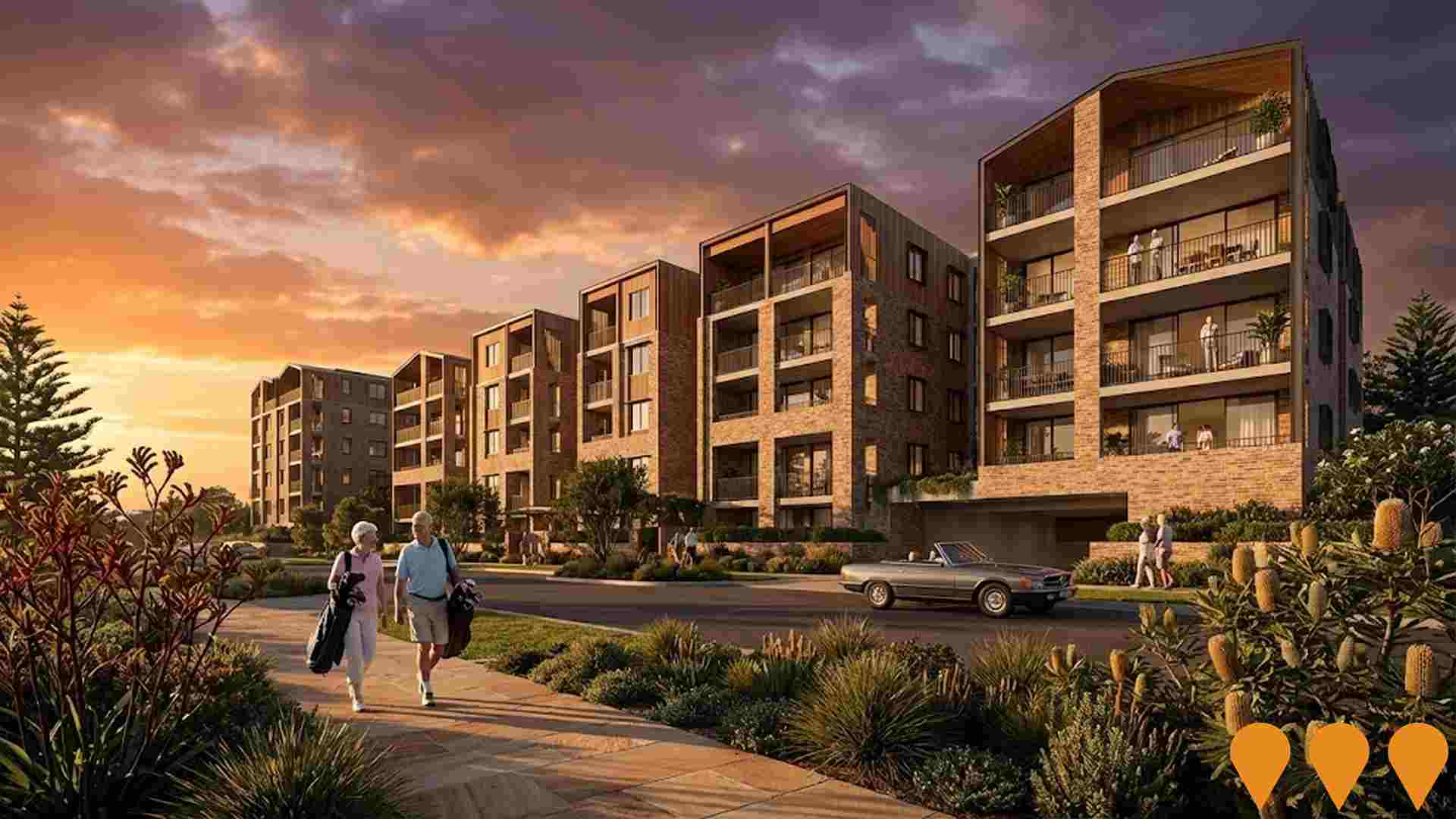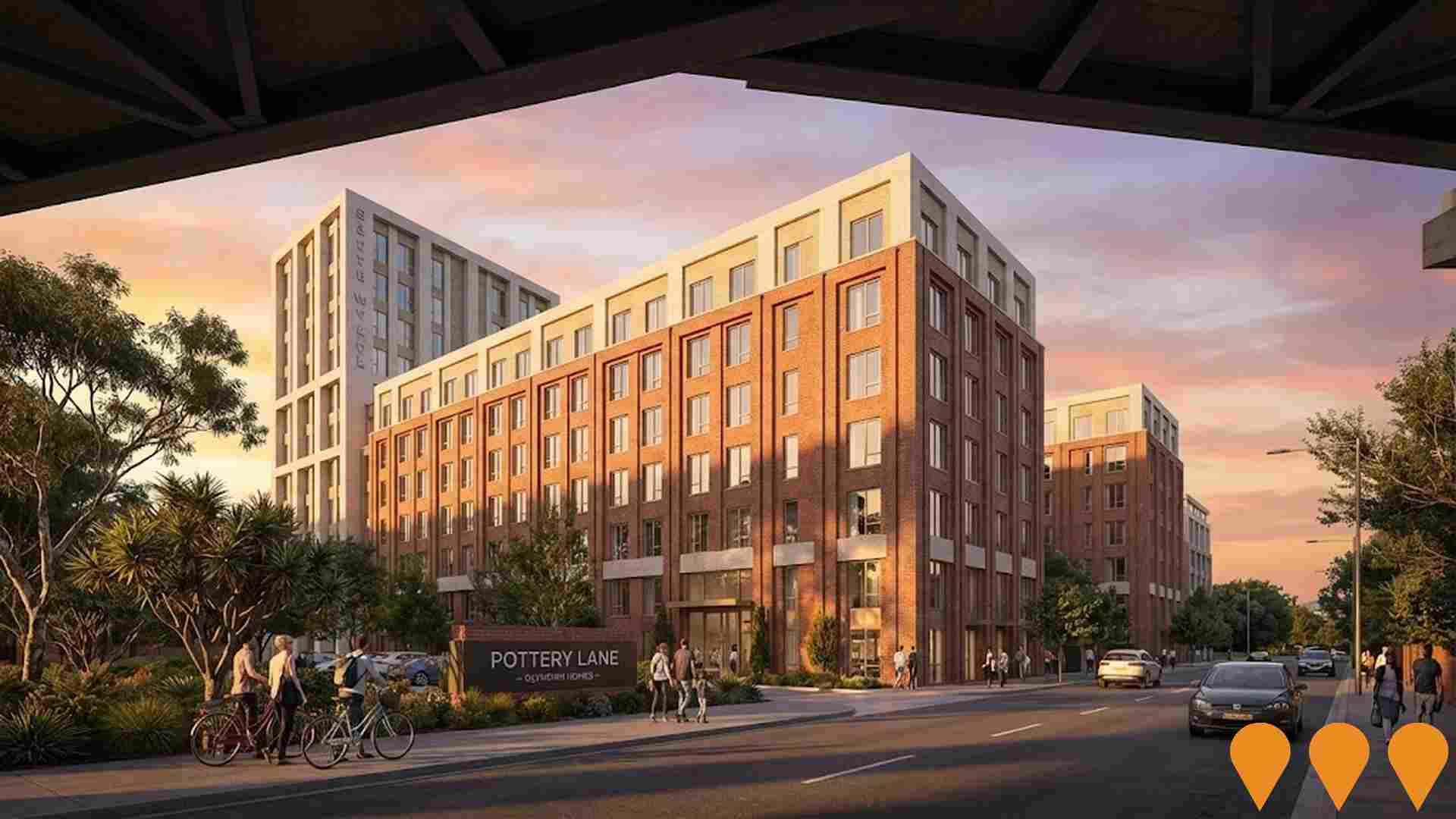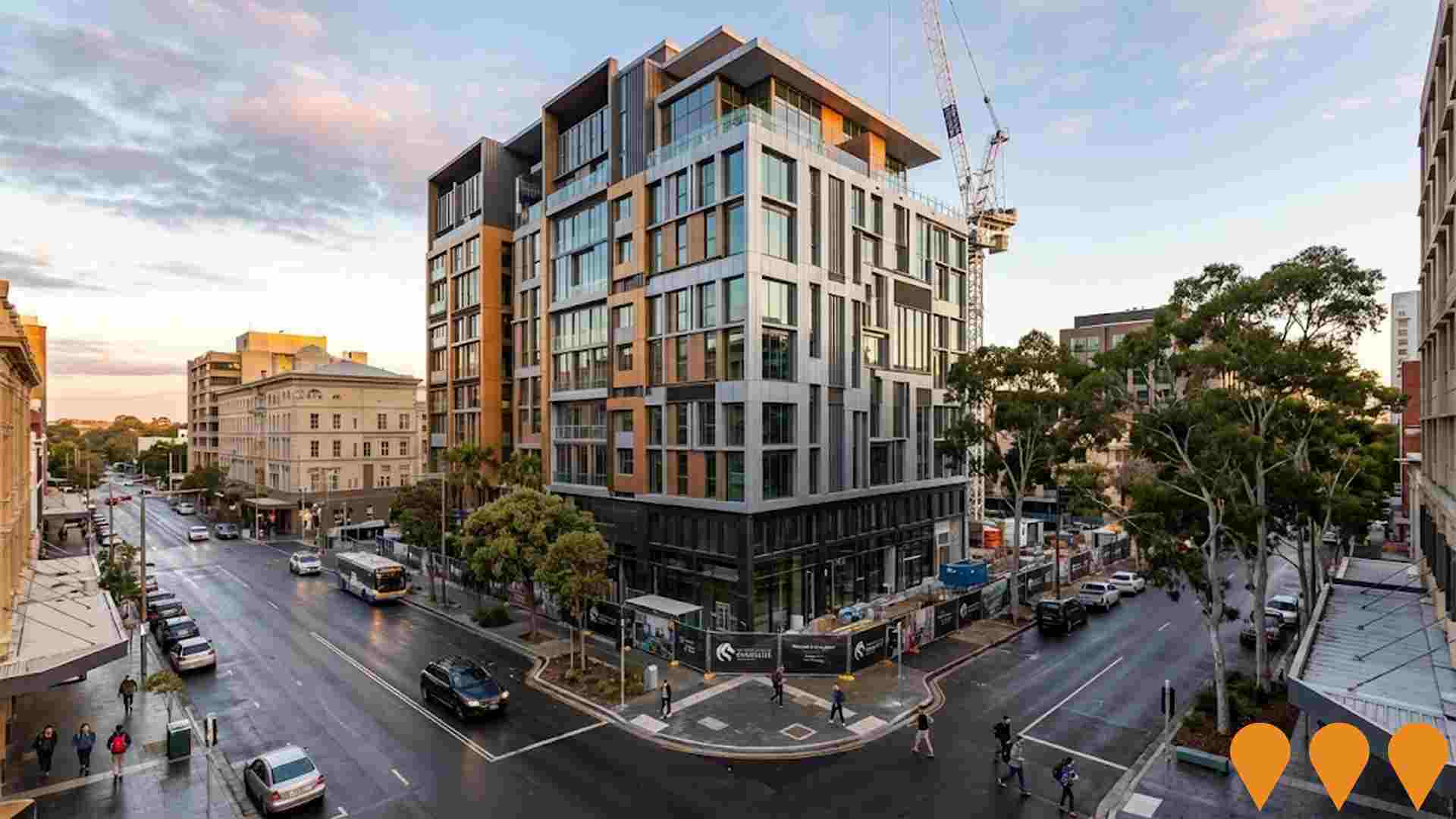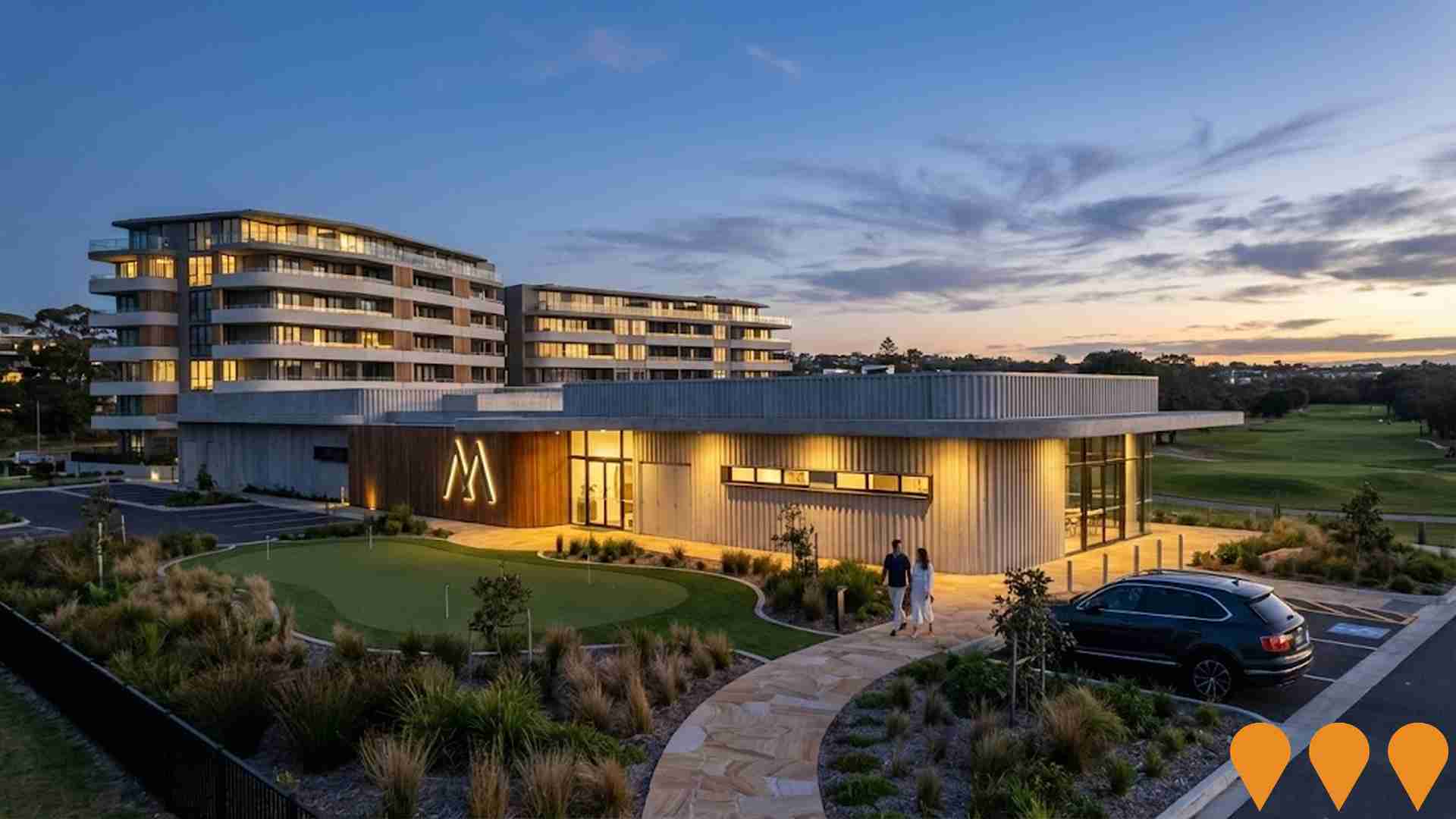Chart Color Schemes
est. as @ -- *
ABS ERP | -- people | --
2021 Census | -- people
Sales Activity
Curious about local property values? Filter the chart to assess the volume and appreciation (including resales) trends and regional comparisons, or scroll to the map below view this information at an individual property level.
Find a Recent Sale
Sales Detail
Population
Merewether - The Junction has seen population growth performance typically on par with national averages when looking at short and medium term trends
As of November 2025, Merewether - The Junction's population is around 14,848. This figure reflects an increase since the 2021 Census, which reported a population of 14,506 people. By June 2024, the estimated resident population was 14,808, with an additional 53 validated new addresses recorded after the census date. The population density is approximately 2,048 persons per square kilometer. This growth rate of 2.4% since the census places Merewether - The Junction within 2.7 percentage points of the non-metro area's growth rate of 5.1%. Overseas migration contributed around 85.8% of overall population gains during recent periods.
AreaSearch uses ABS/Geoscience Australia projections for each SA2 area, released in 2024 with a base year of 2022. For areas not covered by this data, AreaSearch utilises NSW State Government's SA2 level projections, released in 2022 with a base year of 2021. Growth rates by age group are applied to all areas for years 2032 to 2041. By 2041, Merewether - The Junction is expected to grow by approximately 1,590 persons, recording a total gain of around 10.4% over the 17-year period.
Frequently Asked Questions - Population
Development
Residential development activity is slightly higher than average within Merewether - The Junction when compared nationally
Merewether-The Junction has seen approximately 52 new homes approved annually over the past five financial years ending June 30, 2021, totalling 264 homes. As of April 2026, 15 approvals have been recorded in this financial year. On average, each dwelling constructed between FY-21 and FY-25 has accommodated around 1.5 new residents per year, indicating a balance between supply and demand that supports stable market conditions. The average construction value of new properties is approximately $565,000, reflecting developers' focus on the premium segment with upmarket properties.
In this financial year, $9.6 million in commercial approvals have been registered, suggesting moderate levels of commercial development compared to other areas. Relative to the rest of NSW, Merewether-The Junction has around two-thirds the rate of new dwelling approvals per person and ranks among the 59th percentile of areas assessed nationally, indicating its established nature and potential planning limitations. The area's building activity consists of approximately 54.0% standalone homes and 46.0% attached dwellings, offering a range of housing types catering to different price ranges. With around 266 people per dwelling approval, Merewether-The Junction is characterized as a low-density area.
Future projections estimate an increase of 1,550 residents by 2041, with existing development levels aligned with future requirements, maintaining stable market conditions without significant price pressures.
Frequently Asked Questions - Development
Infrastructure
Merewether - The Junction has strong levels of nearby infrastructure activity, ranking in the top 30% nationally
Changes in local infrastructure, major projects, and planning initiatives significantly influence an area's performance. AreaSearch has identified 37 projects that may impact the area. Notable projects include The Merewether Residences, Lake Macquarie Private Hospital Expansion, Lingard Private Hospital Expansion, Gateshead LAHC General Housing Development. The following list details those likely to be most relevant.
Professional plan users can use the search below to filter and access additional projects.
INFRASTRUCTURE SEARCH
 Denotes AI-based impression for illustrative purposes only, not to be taken as definitive under any circumstances. Please follow links and conduct other investigations from the project's source for actual imagery. Developers and project owners wishing us to use original imagery please Contact Us and we will do so.
Denotes AI-based impression for illustrative purposes only, not to be taken as definitive under any circumstances. Please follow links and conduct other investigations from the project's source for actual imagery. Developers and project owners wishing us to use original imagery please Contact Us and we will do so.
Frequently Asked Questions - Infrastructure
Lake Macquarie Private Hospital Expansion
Twin state-significant approvals to expand Lake Macquarie Private Hospital into a larger health precinct, including a major hospital extension and a separate tower option. Works include a multi-storey addition with new operating theatres, expanded ED capacity, intensive care, consulting suites, new inpatient beds and structured parking. Ramsay Health Care is the proponent.
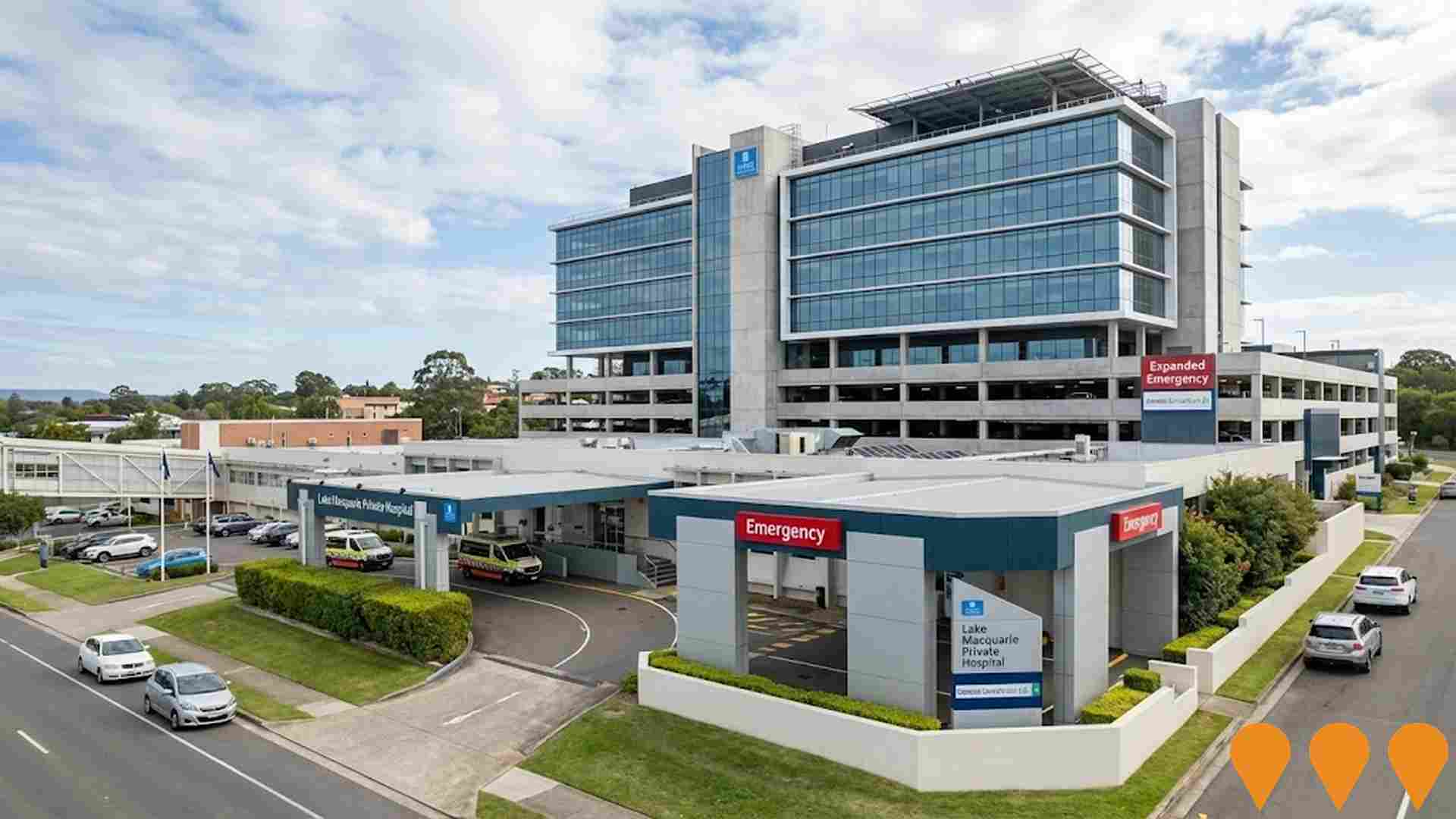
Lingard Private Hospital Expansion
State Significant Development application for a multi-stage expansion of Lingard Private Hospital. Current phase includes a two-storey extension providing additional wards, imaging department, operating theatres, new main entrance/reception and undercroft parking. Longer-term masterplan will increase licensed beds from 125 to 210 and operating theatres from 11 to 16.

Newcastle Future Transit Corridor
Transport for NSW has confirmed the **Newcastle Future Transit Corridor** route, which will run between the Newcastle Interchange and the Broadmeadow precinct, primarily along Tudor Street. This corridor is being safeguarded to enable **future transport options**, such as light rail or rapid buses, supporting urban growth and projected housing and employment at Broadmeadow. The initial route segment closest to the Newcastle Interchange has been earmarked as the **Newcastle Future Infrastructure Corridor** to implement planning controls for its protection. A 2020 Strategic Business Case identified an extension from Newcastle Interchange to John Hunter Hospital via Broadmeadow as the most suitable long-term option, but noted bus solutions could precede light rail due to economic feasibility and to build patronage.

Hunter Indoor Sports Centre
A new 12-court indoor sports facility with a 2,500-seat show court, multi-purpose courts for basketball, netball, volleyball, futsal, pickleball, badminton and wheelchair sports, plus gym, health suites, cafe and extensive car parking. The centre will replace the ageing Newcastle Basketball Stadium and address the critical shortage of indoor sports venues in the Hunter region.
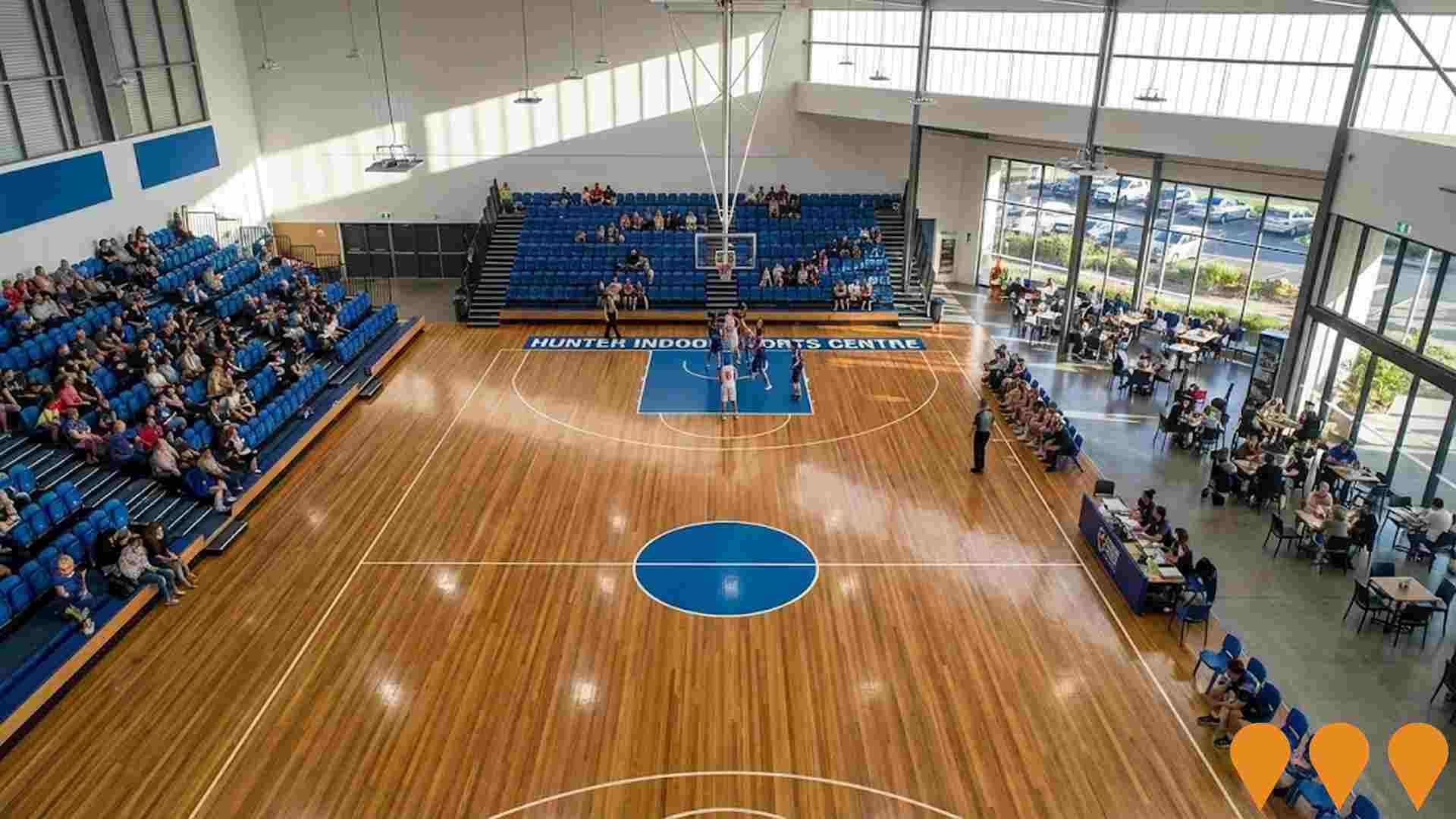
Hamilton South Social Housing Renewal
A renewal project for the Hamilton South public housing estate, led by Homes NSW (formerly NSW Land and Housing Corporation), with a focus on tenant-led improvements and potential redevelopment for a mix of social and private housing. The project is currently focused on critical maintenance, repairs, and a new tenant engagement initiative, including the formation of a Tenant Leadership Group in partnership with the Hunter Community Alliance, with $450,000 in funding allocated for this initiative over three years, starting mid-2025. The broader redevelopment of outdated properties on large blocks into modern townhouses is being considered, with a commitment to tenant inclusion and minimal disruption.

The Store Newcastle
A major redevelopment of the historic former Newcastle Co-Operative Store site into two luxury residential towers (28 and 30 storeys) comprising 352 apartments (1-4 bedrooms), ground-floor retail and commercial spaces, and one acre of resort-style amenities including swimming pool, tennis court, rooftop observation deck, private event spaces, and landscaped areas. Developed by Doma Group, the project sets a new benchmark for apartment living in Newcastle with premium finishes and unparalleled city, harbour, and beach views.
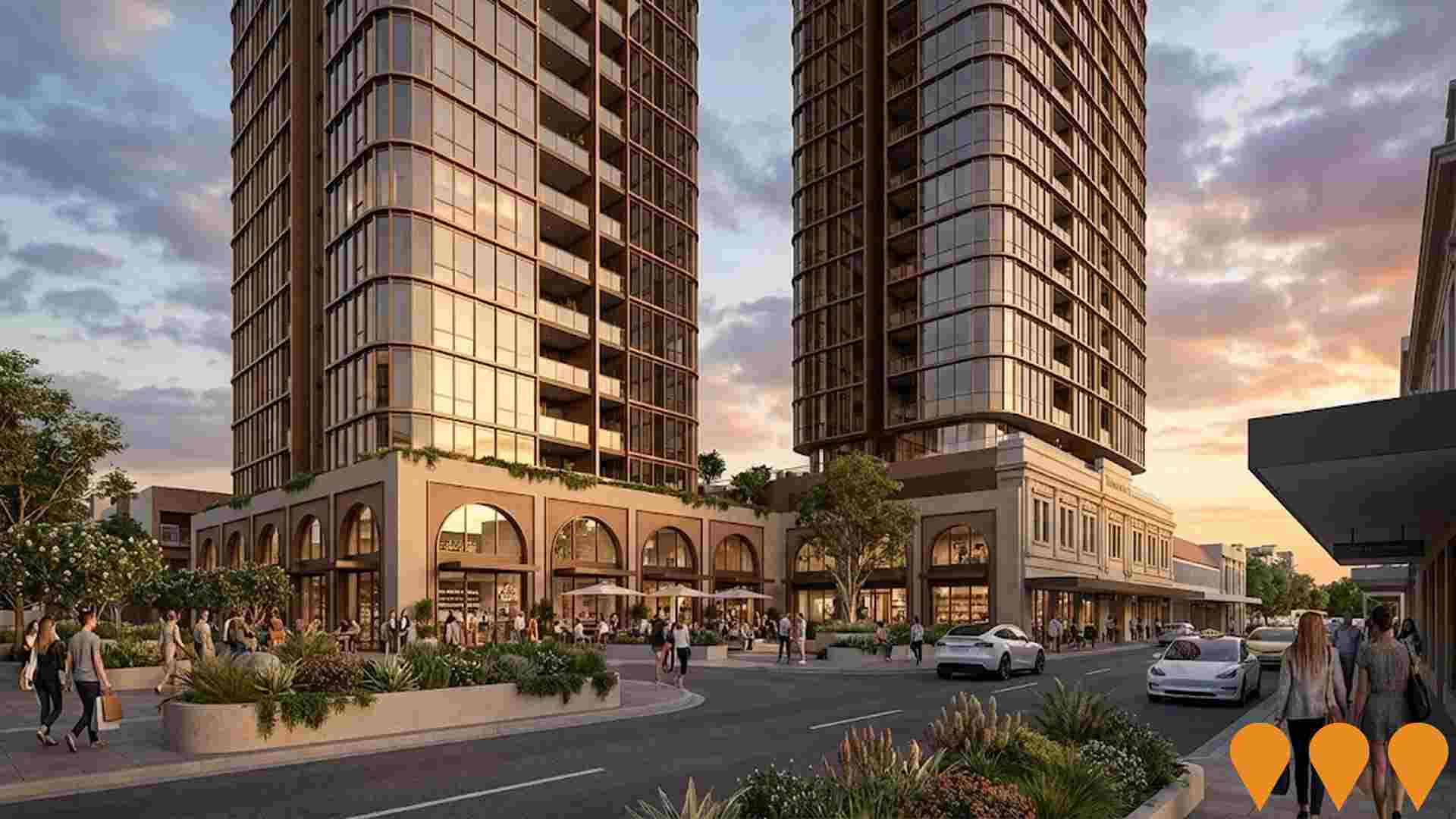
Dairy Farmers Towers
Newcastle's tallest residential towers comprising 191 luxury apartments across two towers (99m and 89m) at the historic Dairy Farmers Corner. Features 1, 2 & 3 bedroom apartments with 5 floors of commercial space, pool with harbour views, gym, wine bar, shared work hub, and 360-degree Newcastle vistas. Plans include reimagining heritage structures for a public art installation.
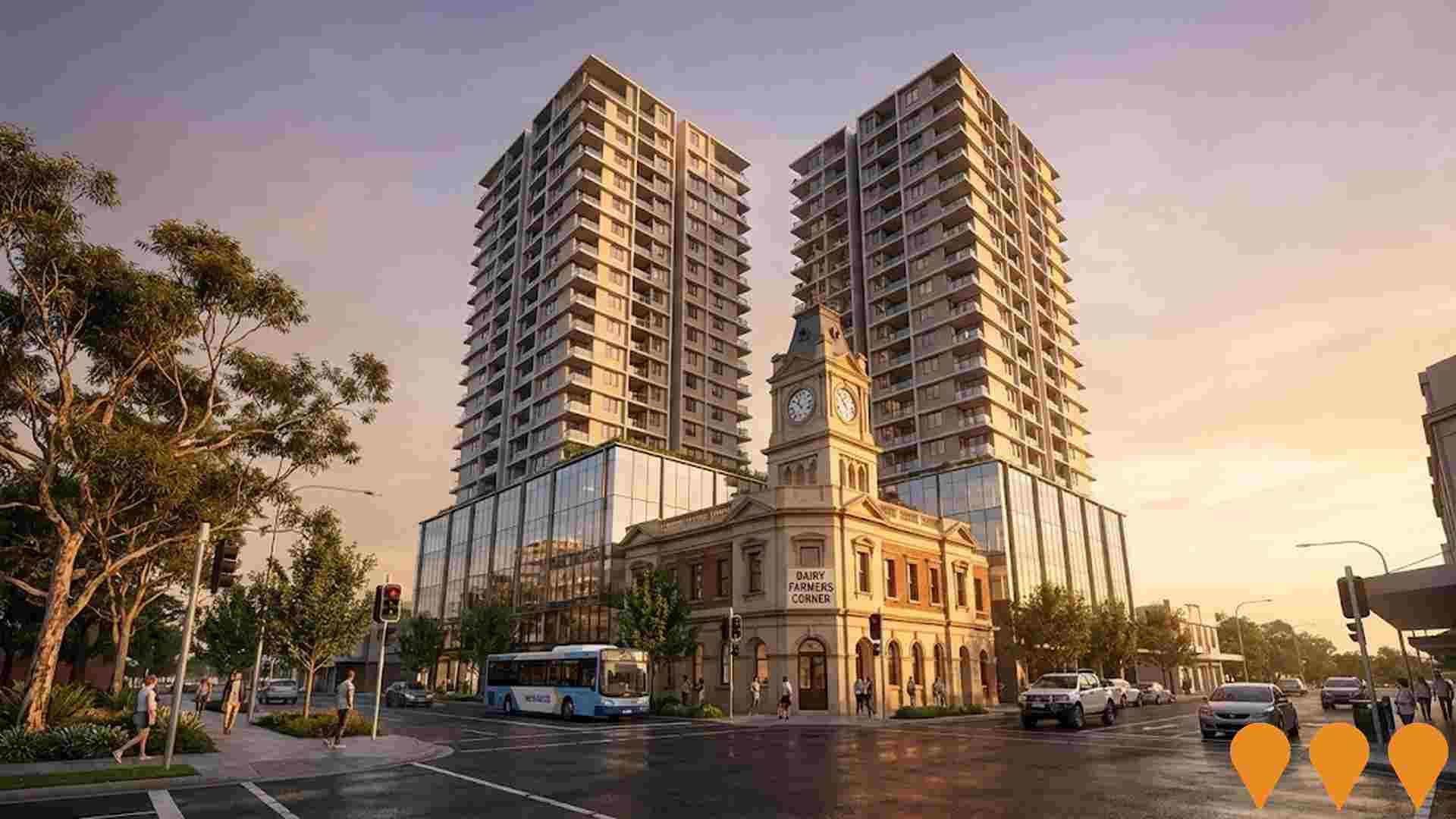
Newcastle Art Gallery Expansion
Major expansion of Newcastle Art Gallery to create a contemporary arts and cultural hub, including new contemporary galleries, education facilities, conservation laboratories, public amenities, exhibition spaces, and community areas. Part of Newcastle's cultural precinct development strategy with enhanced accessibility and visitor experience to enhance cultural offerings in the city.

Employment
AreaSearch analysis of employment trends sees Merewether - The Junction performing better than 90% of local markets assessed across Australia
Merewether - The Junction has a highly educated workforce with professional services being strongly represented. The unemployment rate in June 2025 was 1.4%.
This is lower than the Rest of NSW's rate of 3.7%. Employment growth over the past year was estimated at 2.4%. As of June 2025, 9,056 residents are employed with an unemployment rate of 2.3% and workforce participation at 68.1%, higher than Rest of NSW's 56.4%. Key employment sectors include health care & social assistance, education & training, and professional & technical services.
Health care & social assistance shows notable concentration with levels at 1.3 times the regional average, while agriculture, forestry & fishing has lower representation at 0.3% compared to the regional average of 5.3%. The area offers limited local employment opportunities as indicated by Census working population vs resident population count. Over a 12-month period ending June 2025, employment increased by 2.4% while labour force rose by 2.5%, leading to a slight rise in unemployment rate of 0.1 percentage points. In comparison, Rest of NSW saw employment fall by 0.1%, labour force expand by 0.3%, and unemployment rise by 0.4 percentage points. Jobs and Skills Australia's national employment forecasts from May 2025 project national employment growth at 6.6% over five years and 13.7% over ten years. Applying these projections to Merewether - The Junction's employment mix suggests local growth of approximately 7.4% over five years and 15.1% over ten years, though these are simple extrapolations for illustrative purposes only and do not account for localised population projections.
Frequently Asked Questions - Employment
Income
Income metrics indicate excellent economic conditions, with the area achieving higher performance than 75% of national locations assessed by AreaSearch
According to AreaSearch's aggregation of ATO data released for financial year 2022, Merewether - The Junction had a median income among taxpayers of $63,435. The average income stood at $104,063. This places it in the top percentile nationally. In comparison, Rest of NSW had median and average incomes of $49,459 and $62,998 respectively. Based on Wage Price Index growth of 12.61% since financial year 2022, current estimates for Merewether - The Junction are approximately $71,434 (median) and $117,185 (average) as of September 2025. From the Census conducted in August 2021, household, family, and personal incomes in Merewether - The Junction rank between the 82nd and 85th percentiles nationally. Income analysis shows that 27.3% of individuals earn between $1,500 and $2,999 per week, mirroring the regional average of 29.9%. The district demonstrates affluence with 37.8% earning over $3,000 per week, supporting premium retail and service offerings. Housing accounts for 13.8% of income. Residents rank within the 84th percentile for disposable income. The area's SEIFA income ranking places it in the 9th decile.
Frequently Asked Questions - Income
Housing
Merewether - The Junction displays a diverse mix of dwelling types, with above-average rates of outright home ownership
The dwelling structure in Merewether - The Junction, as per the latest Census, consisted of 62.5% houses and 37.5% other dwellings (semi-detached, apartments, 'other' dwellings), compared to Non-Metro NSW's 70.5% houses and 29.5% other dwellings. Home ownership in Merewether - The Junction stood at 36.6%, with mortgaged dwellings at 30.7% and rented ones at 32.8%. The median monthly mortgage repayment was $2,500, higher than Non-Metro NSW's average of $1,962. The median weekly rent figure was $420, compared to Non-Metro NSW's $400. Nationally, Merewether - The Junction's mortgage repayments were significantly higher at $2,500 versus the Australian average of $1,863, and rents were substantially above the national figure of $375.
Frequently Asked Questions - Housing
Household Composition
Merewether - The Junction features high concentrations of group households, with a higher-than-average median household size
Family households account for 66.2% of all households, including 30.2% couples with children, 27.6% couples without children, and 7.4% single parent families. Non-family households make up the remaining 33.8%, with lone person households at 27.1% and group households comprising 6.9%. The median household size is 2.5 people, which is larger than the Rest of NSW average of 2.4.
Frequently Asked Questions - Households
Local Schools & Education
Merewether - The Junction shows strong educational performance, ranking in the upper quartile nationally when assessed across multiple qualification and achievement indicators
Educational attainment in Merewether-The Junction shows a significant advantage, with 43.9% of residents aged 15+ holding university qualifications, compared to 21.3% in Rest of NSW and 26.1% in the SA4 region. Bachelor degrees are most common at 29.8%, followed by postgraduate qualifications (10.3%) and graduate diplomas (3.8%). Vocational credentials are also prominent, with 28.4% of residents aged 15+ holding such qualifications – advanced diplomas (10.8%) and certificates (17.6%). Educational participation is high, with 30.9% of residents currently enrolled in formal education.
This includes 9.1% in primary education, 8.4% in tertiary education, and 8.0% pursuing secondary education. Six schools operate within Merewether-The Junction, educating approximately 1,873 students. The area demonstrates significant socio-educational advantages and academic achievement (ICSEA: 1101). All six schools focus exclusively on primary education, with secondary options available in surrounding areas.
Frequently Asked Questions - Education
Schools Detail
Nearby Services & Amenities
Transport
Transport servicing is good compared to other areas nationally based on assessment of service frequency, route connectivity and accessibility
Merewether-The Junction has 129 active public transport stops operating within its area. These stops are served by a mix of buses along 24 individual routes. Together, these routes facilitate 1,626 weekly passenger trips.
The accessibility to public transport in the area is rated excellent, with residents located an average of 118 meters from their nearest stop. On average, there are 232 trips per day across all routes, equating to approximately 12 weekly trips per individual stop.
Frequently Asked Questions - Transport
Transport Stops Detail
Health
The level of general health in Merewether - The Junction is notably higher than the national average with both young and old age cohorts seeing low prevalence of common health conditions
Merewether - The Junction, as of recent data, shows superior health outcomes for both younger and older age groups, with low prevalence of common health conditions. Approximately 73% of its total population (10,779 people) has private health cover, notably higher than the Rest of NSW's 55.6%, and the national average of 55.3%. Mental health issues and arthritis are the most prevalent conditions, affecting 8.4 and 7.5% of residents respectively, while 70.6% report no medical ailments, compared to 64.9% in the Rest of NSW.
As of recent census data, 16.5% of residents are aged 65 and over (2,455 people). Health outcomes among seniors align with those of the general population, both being above average.
Frequently Asked Questions - Health
Cultural Diversity
Merewether - The Junction ranks below the Australian average when compared to other local markets across a number of language and cultural background related metrics
Merewether-The Junction showed lower cultural diversity, with 87.4% born in Australia, 93.3% being citizens, and 93.6% speaking English only at home. Christianity dominated at 49.1%. Judaism was overrepresented at 0.2%, compared to 0.1% regionally.
Top ancestry groups were English (31.0%), Australian (27.2%), Irish (10.6%). Welsh (0.8%) and Scottish (9.2%) were also notably represented, compared to regional averages of 0.8% and 8.4%, respectively. Macedonian was slightly underrepresented at 0.6%.
Frequently Asked Questions - Diversity
Age
Merewether - The Junction's population is slightly older than the national pattern
The median age in Merewether - The Junction is 39 years, which is significantly lower than Rest of NSW's average of 43 but essentially aligned with Australia's median age of 38 years. Relative to Rest of NSW, Merewether - The Junction has a higher concentration of residents aged 25-34 (15.7%) but fewer residents aged 65-74 (9.3%). According to the 2021 Census, the 25 to 34 age group has increased from 13.4% to 15.7% of the population while the 55 to 64 cohort has declined from 13.0% to 11.3%. By 2041, demographic projections indicate significant shifts in Merewether - The Junction's age structure. Notably, the 25 to 34 group is expected to grow by 29%, reaching 3,010 people from 2,325. Conversely, the 15 to 24 and 65 to 74 cohorts are projected to experience population declines.
